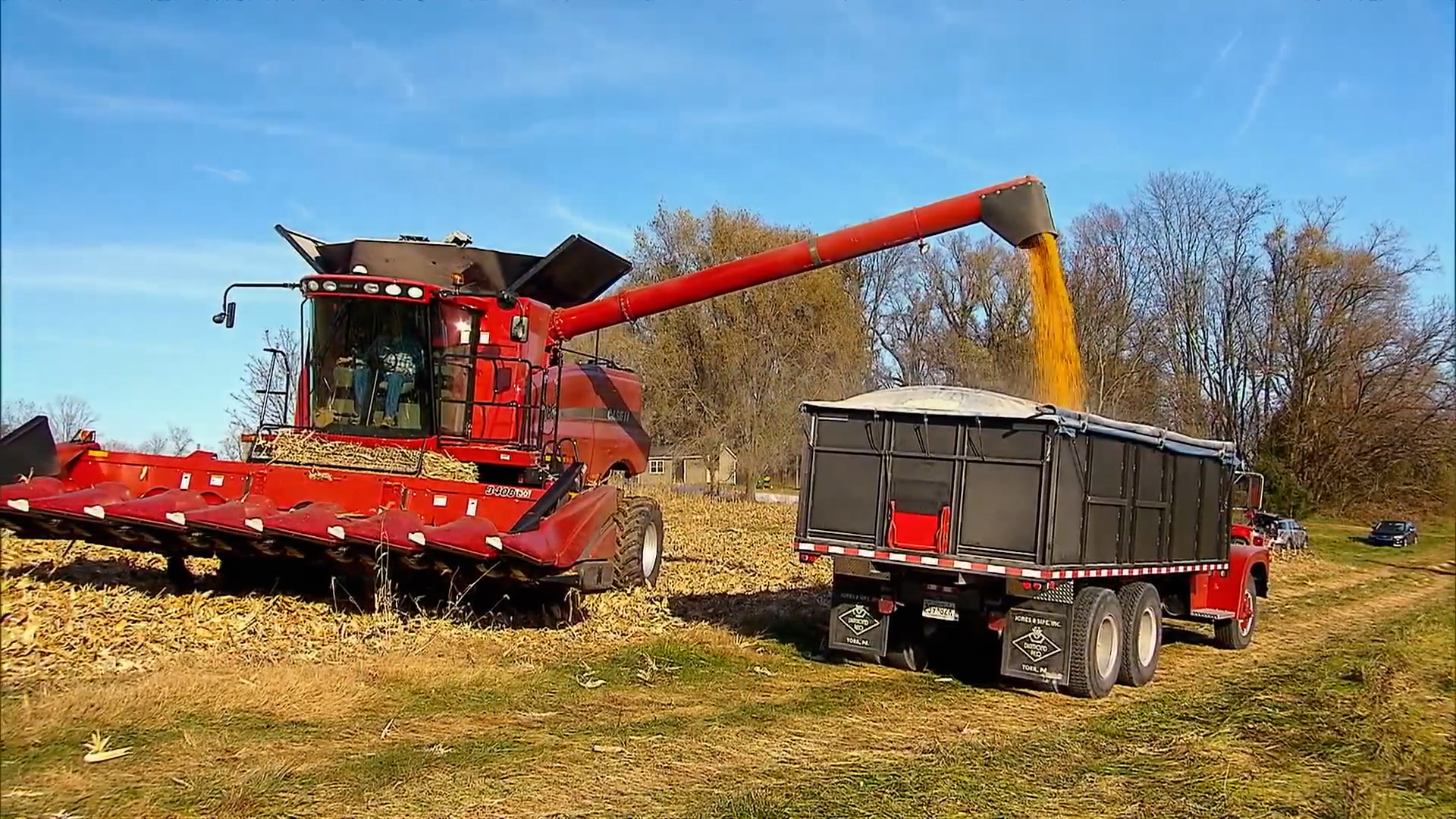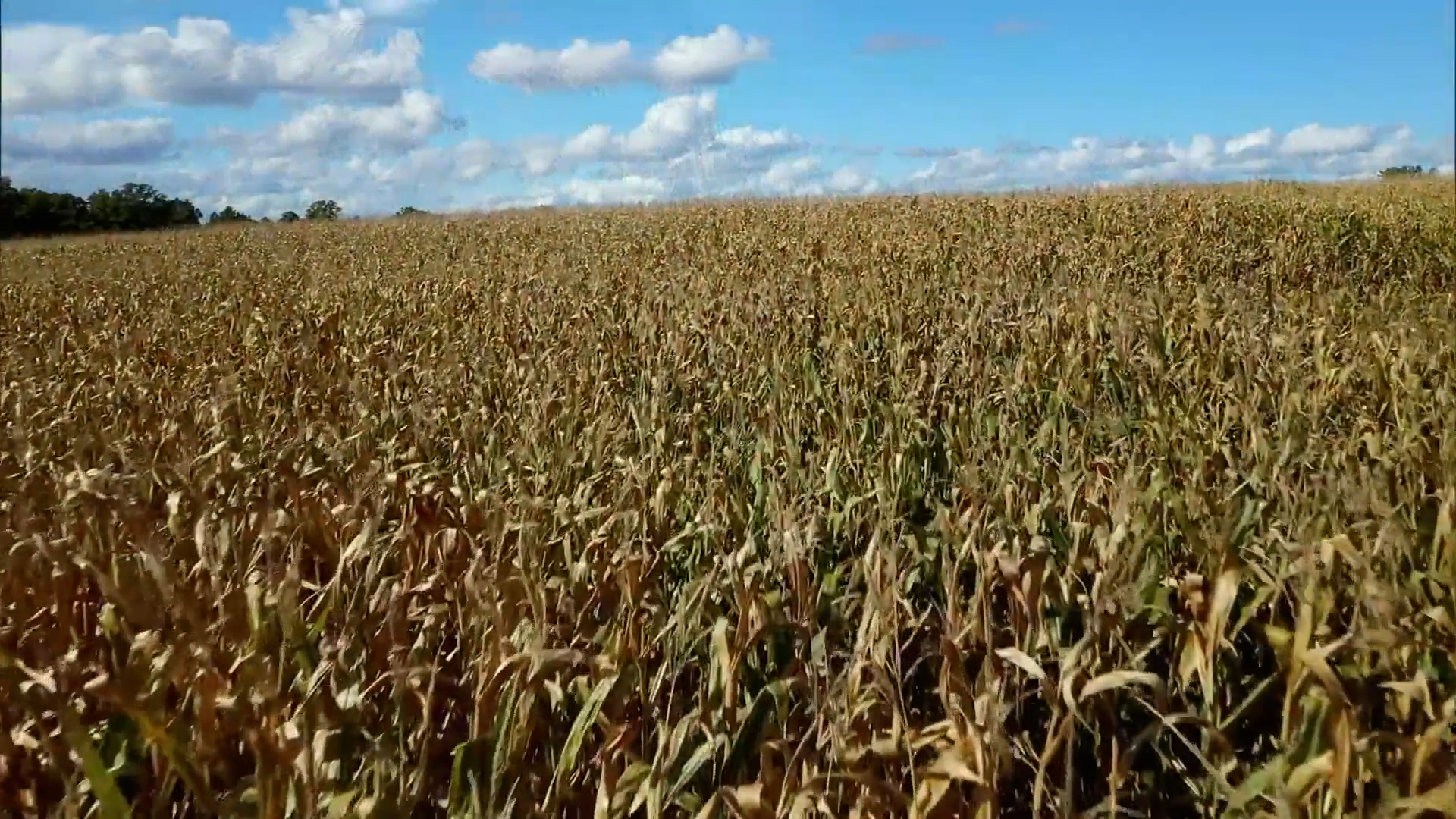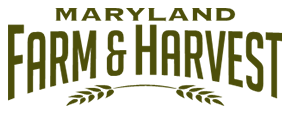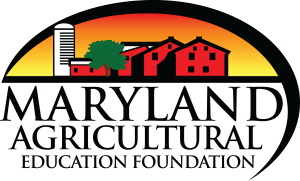Explore

The combine on Carroll Mill Farm empties corn into a truck before it is stored in a bin.
Along with wheat and rice, corn is one of the world's major grain crops. Many of the foods we eat and the products we use come from corn. The U.S. is the largest producer of corn in the world. Corn production in the U.S. has risen over time, driven in part by increased demands for livestock feed and for fuel ethanol, as well as by an increase in exports.
Different varieties of corn are grown to meet specific food and production needs. There are five major types of corn, each classified by kernel type: popcorn, flint corn, flour corn, sweet corn, and dent corn. Each corn type serves a unique purpose. Corn is usually one of three colors: white, yellow, or a mix of white and yellow.
At Carroll Mill Farm in Howard County, Md., farmer Ricky Bauer meets with Maegan Mullins from Willard Agri-Service in mid-May to prepare for corn seed planting. Maegan will help manage the planting and harvest of the crops. Before buying corn seed, farmers consider the estimated time the seeds will take to grow to maturity. Farmers also consider soil quality, wildlife, and the demands of the market the corn will be sold to. The physical layout of the field helps to determine where corn seeds are planted. For instance, less expensive seed varieties are planted on the perimeter (or outside) of the field, while the more expensive seeds are planted toward the middle (or center rows) of the field. This is because most deer and other wildlife feast on the outer-most crops.

A corn field as fall approaches.
Corn is a fast-growing and hungry plant. It can grow to full maturity in between 60 and 100 days. During that time, the field is watered and fertilized. Initially a corn field is green. Then, in early fall, the color fades as the corn dries out. Farmer Ricky’s corn harvest is in November. The corn will begin to form dents in the kernels, which is a sign that the corn is drying down and almost ready for harvest. Farmer Ricky’s seeded dent corn is used as feed for livestock and to make other products.
Animals, weather, and pollination influence the consistency of the crop yield. During the harvest, farmer Ricky drives a corn and grain harvester machine called a combine, which strips the ears from the stalks. The combine collects the corn and blows the compostable stalks back onto the field. This harvest method is done with both fresh corn and seed corn. Yields are measured by the bushel. The combine calculates the water content of the corn; moisture levels should be between 17-19%. If the water content is too high, the corn will spoil in storage. Farmer Ricky has to harvest at this time because leaving the corn in the field will risk it being eaten by animals. Once it is gathered from the field, the corn is taken and stored in bins. Propane heaters continue to dry the grain until it is ready to be sold.








